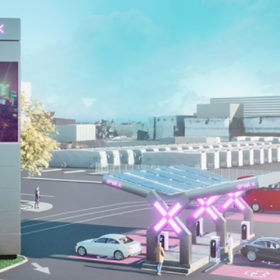Chile tenders 2,700 hectares for wind, solar deployment
The allocated land will be used for either wind or solar power projects. Interested developers will have time until May 25 to submit their project proposals.
Chile launches 5.25GWh renewable energy auction
The Chilean energy regulator has launched an auction to supply electricity to the national system over a period of 15 years from 2027. The final results will be announced in the summer.
Robot dog for PV plant monitoring
Spanish renewable energy company Acciona is using a robot dog, instead of drones, to monitor a solar park in northern Chile. The device has a built-in thermal vision system that generates thermographic reports on the status of the different PV plant components, as it walks between the panel rows following a programmed route.
Chile’s first fast-charging station for EVs
The recharging station will operate 24 hours a day and in a flexible format, which will allow fleets of electric buses, last-mile distribution vehicles, trucks, taxis and private electric cars to be supplied through fast charging points.
Green hydrogen could disrupt global trade, bilateral energy relations
While there are still many uncertainties as to the way in which hydrogen trade might evolve and change economic ties and political dynamics between countries, experts agree that green hydrogen can bring winds of change to the global energy arena. According to the International Renewable Energy Agency, significant geoeconomic and geopolitical shifts are just around the corner.
The Hydrogen Stream: Australia approves $150 million hydrogen promotion program, Mitsubishi developing ammonia combustion burner in Japan
In other news, Oil India is setting up a 100 kW green hydrogen production facility in Assam, while the German government is providing €60 million for a project aimed at preparing electrolyzer technologies for industrial production at gigawatt scale.
Chile to hold new renewables auction in June
Storage projects, and projects linked to some storage capacity, will also be entitled to participate in the procurement exercise.
Brazil and Chile could lead charge to affordable green hydrogen
Falling electrolyzer costs driven by economies of scale, increased automation of production and the modularity of such systems will bring green hydrogen to a competitive cost with its fossil-fuel powered variants in a dozen markets by 2030, according to WoodMac.
Chile wants to export solar energy to Asia via 15,000km submarine cable
The Antípodas project was announced by the Chilean government last week. It is aimed at taking advantage of the huge solar potential of the Atacama Desert, which is the world’s region with the highest solar radiation.
The weekend read: Chile’s energy transition and the crucial election
Chile continues to lead the energy transition in Latin America, but international investors are nervous. The pandemic is subsiding, thanks to a vaccination rate close to 80%, and energy demand is showing signs of recovery. However, the political landscape still has investors on edge, reports Luisa Cabello.









